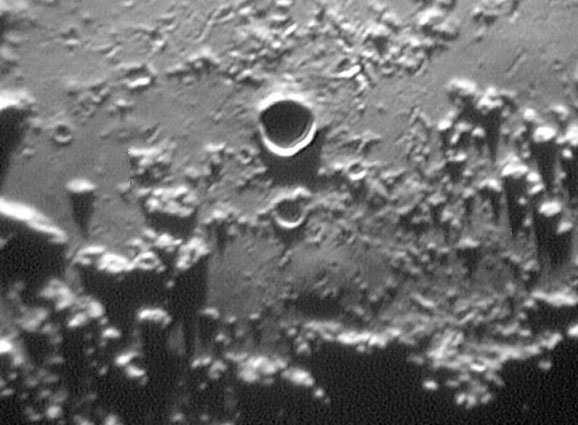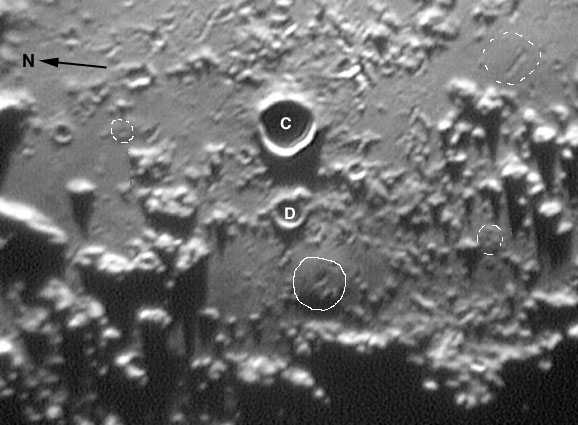Difference between revisions of "July 11, 2004"
(Created page with "__NOTOC__ =Toby's Dome= ---- ===COMMENTS?=== Click on this icon image:PostIcon.jpg at the upper right to post a comment.") |
|||
| (14 intermediate revisions by the same user not shown) | |||
| Line 1: | Line 1: | ||
__NOTOC__ | __NOTOC__ | ||
=Toby's Dome= | =Toby's Dome= | ||
| − | + | <!-- Start of content --> | |
| − | + | <table width="85%" border="0" align="center" cellpadding="6" cellspacing="2"> | |
| − | + | <tr> | |
| − | ---- | + | </tr> |
| − | === | + | </table> |
| − | + | <table width="85%" border="0" align="center" cellpadding="6" cellspacing="2"> | |
| + | <tr> | ||
| + | <td colspan="2"><div align="center"> | ||
| + | {{HoverImage|LPOD-2004-07-11.jpeg|LPOD-2004-07-11b.jpeg}} | ||
| + | </div></td> | ||
| + | </tr> | ||
| + | </table> | ||
| + | <table width="100%" border="0" cellpadding="8"> | ||
| + | <tr> | ||
| + | <td><div align="center"><p>Image Credit: [mailto:kcpaulhk@yahoo.com.hk K.C. Pau ]</p></div></td> | ||
| + | </tr> | ||
| + | </table> | ||
| + | <table class="story" border="0" bgcolor="#FFFFFF" width="90%" cellpadding="10" align="center"><tr><td> | ||
| + | <p class="story" align="center"><b>Toby's Dome</b></p> | ||
| + | <p class="story" align="left"> | ||
| + | Question: What can an amateur astronomer with a webcam and 10" telescope on the [http://observingthesky.org/index.php?p=174 balcony] do that NASA hasn't done yet? Answer: Take high resolution images along the terminator to reveal domes and low elevation features. That is exactly what K.C. Pau does. His photo of an area west of Copernicus shows a 17 km wide dome - with an elongated summit pit - that is only 10-20 km away from the terminator - see mouseover image. This dome is definite and well known, but other possible ones nearby are less certain. For example, K.C. recognized that two smaller features shown here might also be domes: a 7 km wide smooth surfaced one with an off-center crater north of T. Mayer C, and another 7 km one, this time with a rougher surface and two pits, south of T. Mayer D. I suggest that another likely dome is in the upper right corner of K.C.'s image. It is about 16 km wide and cut by a 7 km long by 1.8 km wide depression. Very slight changes in tone occur where the curved dome seems to meet the flat mare. I can see it - can you? None of these domes or possible domes can be seen with any clarity on the higher resolution and higher sun angle Orbiter IV image. The only way to confirm these domes' reality - or to reject them - is to make more images and more visual observations when sunlight is once again just grazing this area. That is exactly what the Geological Researches Group does - [http://www.glrgroup.org/home.htm check them out]! </p> | ||
| + | <blockquote> | ||
| + | <p align="right" class="story">— [mailto:tychocrater@yahoo.com Chuck Wood]</p></blockquote> | ||
| + | <p class="story" align="left"><b>Technical Details:</b><br> | ||
| + | June 27, 2004. 10" f/6 Newtonian + Barlow + Phillips Toucam Pro<br> | ||
| + | Craters Tobias Mayer C and D are between Copernicus and T. Mayer (Rukl 31). | ||
| + | </p> | ||
| + | <p class="story" align="left"><b>Related Links: </b><br> | ||
| + | [http://www.lpi.usra.edu/research/lunar_orbiter/images/img/iv_126_h2.jpg Lunar Orbiter IV View] <br> | ||
| + | [http://www.u-net.com/ph/mas/members/domes/domes.htm#Mil_A Longshaw's Lunar Volcanoes] <br> | ||
| + | A Dome Near Copernicus by Raffaello Lena and others. [http://www.justfurfun.org/djalpo/ Journal] of the Association of Lunar and Planetary Observers, vol. 48 #2, 2004.</p> | ||
| + | <p><b>Yesterday's LPOD:</b> [[July 10, 2004|Lunie]] </p> | ||
| + | <p><b>Tomorrow's LPOD:</b> [[July 12, 2004|Look Twice, Twice]] </p> | ||
| + | </tr> | ||
| + | </table> | ||
| + | <!-- start bottom --> | ||
| + | <table width="100%" border="0" cellspacing="2" cellpadding="4"> | ||
| + | <tr> | ||
| + | <td><hr></td> | ||
| + | </tr> | ||
| + | <tr> | ||
| + | <td><p align="center" class="main_titles"><b>Author & Editor:</b><br> | ||
| + | [mailto:tychocrater@yahoo.com Charles A. Wood]</p> | ||
| + | <!-- Cleanup of credits --> | ||
| + | <!-- Cleanup of credits --> | ||
| + | <!-- Cleanup of credits --> | ||
| + | <!-- Cleanup of credits --> | ||
| + | <!-- Cleanup of credits --> | ||
| + | <!-- Cleanup of credits --> | ||
| + | <!-- Cleanup of credits --> | ||
| + | </tr> | ||
| + | </table> | ||
| + | <!-- end cal --> | ||
| + | <div align="center"></div> | ||
| + | <p> </p> | ||
| + | <!-- End of content --> | ||
| + | {{wiki/ArticleFooter}} | ||
Latest revision as of 22:40, 8 February 2015
Toby's Dome
Image Credit: K.C. Pau |
|
Toby's Dome Question: What can an amateur astronomer with a webcam and 10" telescope on the balcony do that NASA hasn't done yet? Answer: Take high resolution images along the terminator to reveal domes and low elevation features. That is exactly what K.C. Pau does. His photo of an area west of Copernicus shows a 17 km wide dome - with an elongated summit pit - that is only 10-20 km away from the terminator - see mouseover image. This dome is definite and well known, but other possible ones nearby are less certain. For example, K.C. recognized that two smaller features shown here might also be domes: a 7 km wide smooth surfaced one with an off-center crater north of T. Mayer C, and another 7 km one, this time with a rougher surface and two pits, south of T. Mayer D. I suggest that another likely dome is in the upper right corner of K.C.'s image. It is about 16 km wide and cut by a 7 km long by 1.8 km wide depression. Very slight changes in tone occur where the curved dome seems to meet the flat mare. I can see it - can you? None of these domes or possible domes can be seen with any clarity on the higher resolution and higher sun angle Orbiter IV image. The only way to confirm these domes' reality - or to reject them - is to make more images and more visual observations when sunlight is once again just grazing this area. That is exactly what the Geological Researches Group does - check them out! Technical Details: Related Links: Yesterday's LPOD: Lunie Tomorrow's LPOD: Look Twice, Twice |
Author & Editor: |
COMMENTS?
Register, Log in, and join in the comments.





